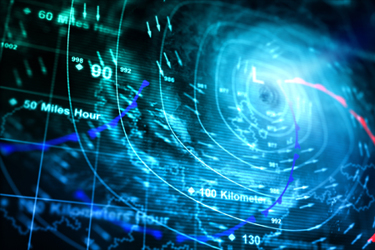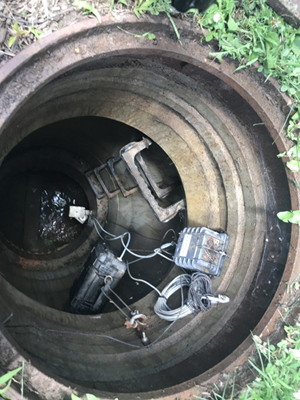Looking Forward: Digital Solutions Must Save Us From Future Disasters Caused By The Deadly Combination Of Aging Infrastructure And Extreme Weather
By Ariel Stern

Infrastructure rarely makes headlines, but the severe devastation in Texas requires a blunt conversation about aging infrastructure in the United States. In a strange coincidence, shortly after news and images from Texas shocked the world, the American Society of Civil Engineers (ASCE) published its 2021 Infrastructure Report Card highlighting the decrepit state of the nation’s infrastructure, and, for the first time, including a report card for stormwater management.
Texas is not alone. While it may be the most extreme, recent example, Americans in many states are consistently plagued by disruptions in critical services. Recent examples include flooding in Kentucky, lack of clean drinking water in Mississippi, among others. To provide critical services to all Americans, legislators and stakeholders must join forces to prioritize the digitization of critical utilities with an emphasis on cybersecurity protection measures and future-proofing technology to prevent the creation of isolated data silos.
Utilities are typically slow to adopt new technologies. The underlying reason for this is justified and understandable: utilities are critical and new technology inherently includes an element of risk. However, the current state of critical utilities is so dilapidated that consistent, quality service seems unattainable. Additionally, some technologies are so widely embraced by the public with nearly everyone owning a smartphone. Critical utilities must embrace the efficiency that comes with digital transformation.
Resilience for critical, aging infrastructure is the goal. Defined as the ability to prevent hazardous events and the speed at which critical services are restored should such an event occur, the ASCE highlights the decisive role digitization played in improving the resilience of water utilities. For the first time since its inception, the Infrastructure Report Card slightly improved the overall grade. This improvement is the sole outcome of digitization. Digitization and automation are proven successful, readily-available tools for critical utilities. Applying these tools to aging infrastructure optimizes existing resources in a timely and cost-effective manner.
Unfortunately, not all water utilities have begun their digital journeys and the disastrous results are only too evident. According to the Bipartisan Policy Center, with over a million miles of water main, there are 26 miles of water main for every 1 mile of interstate highway in the U.S. However, some of these pipes are over a century old and over 6 billion gallons of treated water are lost annually due to water main breaks that occur every two minutes.
Sewer pipes are in similar disrepair. With almost a million miles of sewer pipes, leaks and overflow are common. Untreated sewage regularly pollutes clean water in the U.S. Almost 900 billion gallons of untreated sewage pollutes clean water annually. There is a real cost to this pollution. The cost is felt in the quality of drinking water throughout America, the damage to the environment, and the detrimental impact on the health of Americans.
Damage from stormwater overpowers current infrastructure. Climate change affects weather patterns and challenges infrastructure in ways the original engineers could not have imagined possible. According to the ASCE, urban flooding from rainstorms cost the U.S. over $9 billion annually. The overflows from stormwater pollute clean water sources as well, over 13 million acres of polluted lakes, reservoirs, and ponds and 600,000 miles of polluted rivers and streams.
The water industry is at a critical juncture; digitization and automation is the only way to provide a versatile, easily-deployable, and cost-effective way forward. Without it, water infrastructure will continue to decay, with reliability and quality diminishing until the industry becomes completely unsalvageable.
But there is another way. One American city understood the risks of remaining stagnant and completely digitized its water and wastewater system five years ago. Today, this city is a prime example of how digital solutions optimize the management of old infrastructure struggling to meet the needs of a growing metropolis, even when experiencing extreme weather. This city is Cincinnati.
Founded at the end of the 18th century, Cincinnati built its water treatment plant on the banks of a creek by the Ohio River and railway tracks were soon built nearby. The combined sewer system was designed to direct all sewage and rainwater to the treatment plant, from there the treated water flowed to the Ohio River.
The greater metropolitan area developed and grew. Heavy rain showers became more frequent. The combined sewer system and lone water treatment plant no longer met Cincinnati’s needs and the frequency of untreated sewage overflow events that ended in the Ohio River grew to hundreds and thousands each year.

The only comprehensive, fiscally-plausible, and cyber-secure solution came from an Industrial Internet of Things (IIoT) technology company. Combining hardware and software, the sewer system in Cincinnati was digitized to include real-time remote-monitoring and alerts that allowed city engineers to stay ahead of flooding problems.
No longer battling constant threats of overflow, the data generated and consolidated using technology is currently being applied to create optimal models for sewage control in Cincinnati. The city has not only overcome its challenges, it surpassed all expectations and now leads the U.S. in efficient management of combined sewer systems.
Cincinnati is in no way unique. There are over 770 American cities with combined sewer systems. Just this past September, the combined sewer system in Washington, D.C. was overwhelmed during a rainstorm and raw sewage flooded basements in the capital.
Aging infrastructure has no choice but to become resilient through the adoption of digital solutions. Legislators and stakeholders must act now, before the situation becomes more severe. Without the widespread integration of digital, cyber-secure solutions, it is only a matter of time until disaster strikes again.
The question is, how can we help more American cities deploy technology to support aging infrastructure? How can smaller cities without large budgets be empowered to use technology to overcome their infrastructure challenges?
Ariel Stern is co-founder and CEO of Ayyeka, an Industrial Internet of Things company focused on providing cyber-secure digital solutions for critical utilities.
